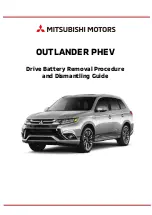
I01�High-voltage�Components
4.�Electrical�Machine�Electronics
62
•
Standby�(also�in�the�event�of�a�component�fault�or�short�circuit,�power�electronics�off)
•
Buck�mode�(Energy�flow�to�the�low-voltage�side.�Converter�controls�voltage�on�low-voltage
side)
•
Discharging�the�high-voltage�link�capacitor�(interlock�fault,�accident,�request�from�master).
The�DC/DC�converter�is�in�"Standby"�mode�when�the�electrical�machine�electronics�is�not�in
operation.�This�is�the�case�when�the�EME�control�unit�is�not�supplied�with�voltage�due,�for�example,
to�a�terminal�status.�But�also�if�there�is�a�fault�the�EME�control�unit�prompts�the�DC/DC�converter�to
assume�"Standby"�mode.�In�this�operating�mode�there�is�no�energy�transfer�between�the�two�vehicle
electrical�systems�and�they�remain�galvanically�separated.
Buck�mode�is�the�normal�operating�mode�when�the�high-voltage�system�is�active.�The�DC/DC
converter�transfers�electrical�energy�from�the�high-voltage�electrical�system�to�the�12 V�vehicle
electrical�system�and�assumes�the�function�of�the�alternator�in�a�conventional�vehicle.�The�DC/DC
converter�must�reduce�the�varying�voltage�from�the�high-voltage�electrical�system�to�the�voltage�in�the
low-voltage�vehicle�electrical�system.�The�voltage�in�the�high-voltage�electrical�system�is�dependent,
for�example,�on�the�state�of�charge�of�the�high-voltage�battery�(about�260 V�to�about�390 V).�The
voltage�in�the�low-voltage�vehicle�electrical�system�controls�the�DC/DC�converter�so�that�the�12 V
battery�is�optimally�charged�and�sets�a�voltage�of�about�14 V�depending�on�the�state�of�charge�and�the
temperature�of�the�battery.�The�EME�control�unit�communicates�with�the�EDME�control�unit,�in�which
the�12 V�power�management�functions�are�performed.�The�result�is�the�setpoint�value�specification�for
the�voltage,�which�the�DC/DC�converter�should�adjust�in�the�low-voltage�vehicle�electrical�system.�The
continuous�output�power�of�the�DC/DC�converter�is�2500 W.
















































